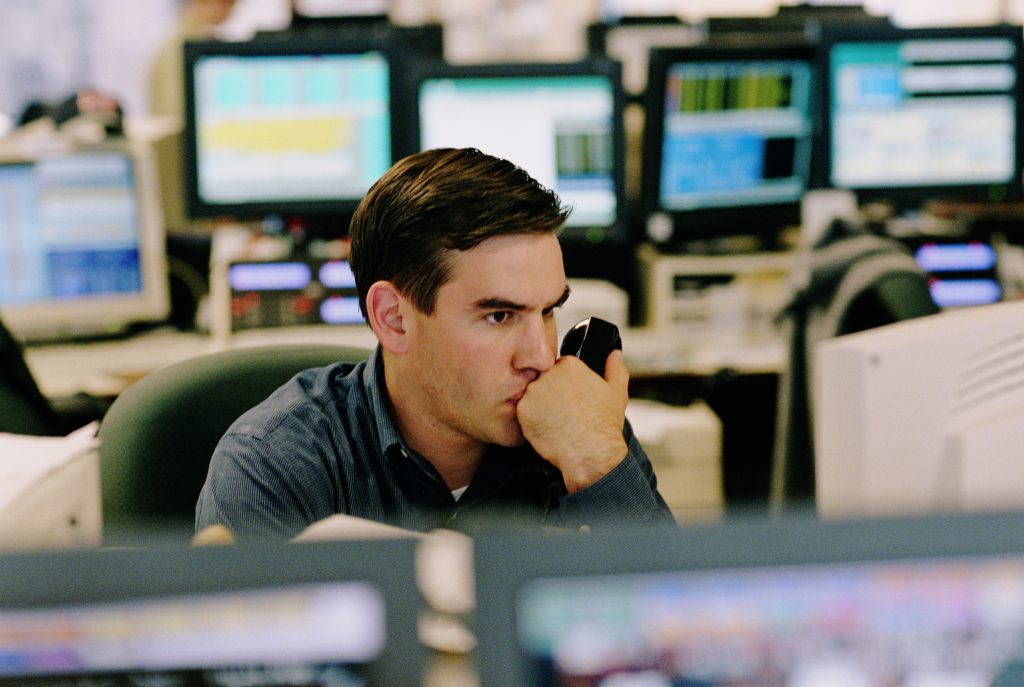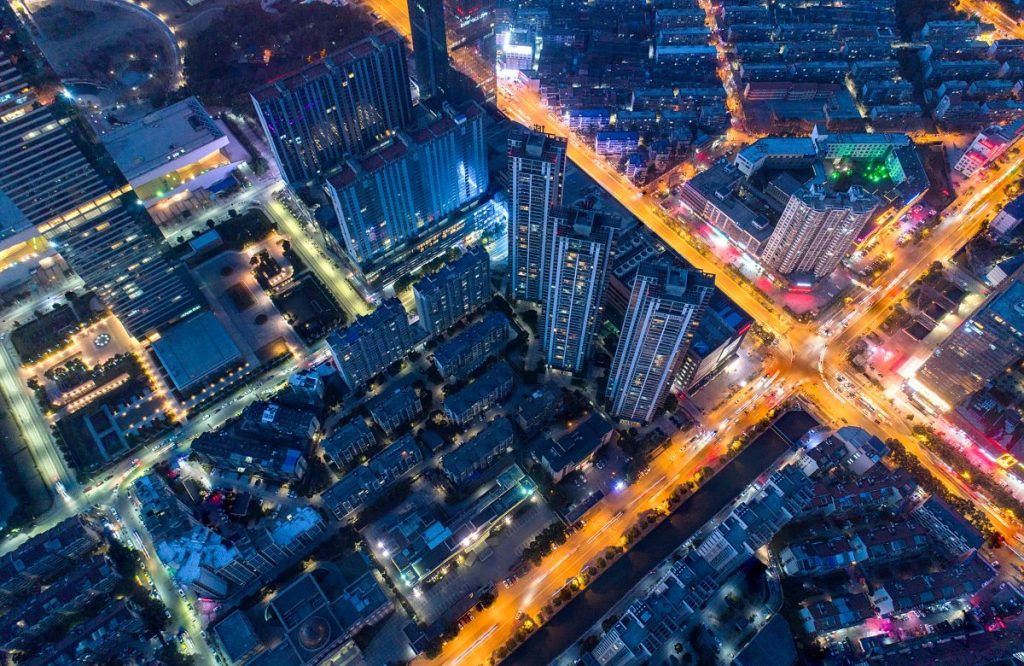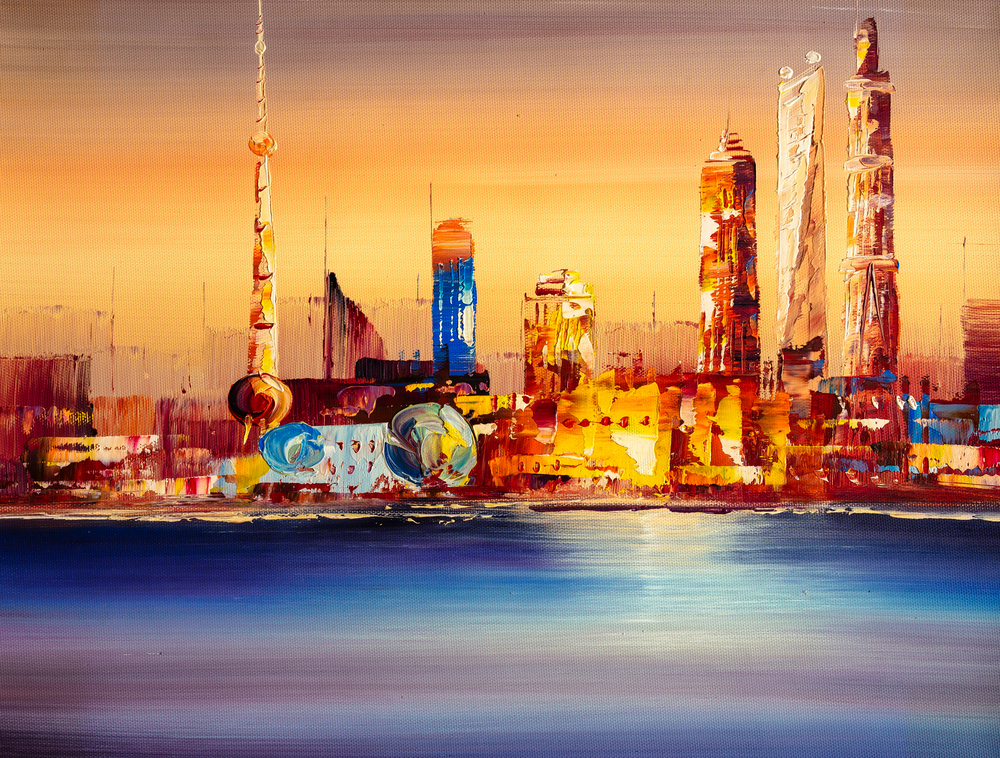
Quarterly Investment Outlook: Is Globalisation Going in Reverse?
Quarterly Investment Outlook: Is Globalisation Going in Reverse?
The first part of answering that question, is, “why do we care?”. Ray Dalio, the CEO of Bridgewater, has often said that one can’t understand finance and portfolio management without examining history and the consequences of decision making.
Globalisation is not only about physical borders. It is about the financial economy. With globalisation, international portfolios were created. Investors got access to stocks and bonds from different countries. Costs dropped significantly over time and investors got a much better risk/reward for their money. Globalisation also created a modicum of economic stability. This made earnings more predictable and thus companies safer to invest in. In 2008, global central banks came together and decided to increase their balance sheets, providing an unprecedented boost to risk assets.
Globalisation is very important for investors. Has it gone in reverse? In the next few pages we will examine just that.
The nature of globalisation
Globalisation has become the bedrock of the capitalist economic system. At some point in mid-20th century, capitalism reached the point where it could only develop outside the close confines of the state. The second World War had already demolished national borders and brought down political systems. The world wasn’t thinking in terms of nation-states anymore, but in terms of “spheres of influence”. It became bi-polar. In essence, the West became synonymous with the American sphere of influence. Then Soviet Socialism collapsed and one by one Russia and the satellite states came into the fold. Capitalism developed even further. It had access to cheap resources and labour. Internationalism was now becoming “globalisation”. It wasn’t though until China, led by Den Xiao Ping’s vision also joined the global community. The world had found its cheap manufacturer, a role the previously recluse state was happy to take on. The world had its global consumer (Americans and Europeans), it global producers (Africa, Russia, South America) and its global manufacturer (China). The west and gradually India, also provided excellent hubs for the services sector.
One could live in New York, get their clothes and children’s games from China, have their services rerouted thorough Delhi and so on. Industry found ways to optimise supply chains across the world and reduce costs. Marshal McLuhan’s “Global Village”[1] was now a reality.
However, after the global financial crisis, this dream seems to be slowly going in reverse. The Swiss Economic Institute KOF produces a globalisation index, comprising of Economic, Trade and Financial globalisation. The headline globalisation index, after 2015, seems to have stalled [2]. The rate at which trade treaties are being signed and borders open has dropped. A think-tank by Bertelesmann also concurs with these findings[3] . Bigger nations, most of which have benefited from globalisation, are now feeding the myth of Autarky, the idea that they can exist and thrive within their own national borders. Trade Wars, fiery immigration debates, the rise of nationalism all seem to contribute to the idea that globalisation has reached its potential and that it might even be going in reverse. Is that the case?
We have often tried to write on the subject. We have debated, we have asked, but answering that particular question has proven peculiarly difficult. In part, that comes down to the definition of globalisation itself.
For some, globalisation is free, frictionless trade. For some, it’s the influence of China on global production and inflation. For others, it’s the unfettered spread of information and culture. And yet for others it is the next evolution of the nation-state.
According to the Oxford dictionary, “globalisation is the process by which businesses or other organisations develop international influence or start operations in an international scale”. The definition, in essence describing the multi-national company, seems somewhat parochial.
According to Investopedia, an established investment resource guide, “Globalization is the spread of products, technology, information, and jobs across national borders and cultures. In economic terms, it describes an interdependence of nations around the globe fostered through free trade.” Yet, even this definition seems limiting. It talks about the spread of goods and services but not the spread of culture and an international zeitgeist.
The Peterson Institute, a well-known trade and internationalist think tank, offers a broader definition: “Globalization is the word used to describe the growing interdependence of the world’s economies, cultures, and populations, brought about by cross-border trade in goods and services, technology, and flows of investment, people, and information”.
It is clear that globalisation means a lot of things to a lot of people. That also makes the definition malleable to suit specific policy purposes. It is also clear that the multitude of definitions will not be helpful to this endeavour.
Globalisation is the internet
So what is globalisation? For the purpose of this paper, we will try to take the view of the historian of the future, one who will look past all the details to describe in a simple sentence and a bird’s eye view that which will, by then, be commonplace.
“Globalisation is the acquisition of a global cultural and commercial conscience by human society made possible by the proliferation of the internet”.
When we think of history, we often do it in terms of nations, wars, generals, borders and such. This view of history is probably not just limiting, but just plain erroneous. History is primarily driven by invention. It was the invention of tools that brought people out of the caves. It was the invention of metal alloys that defined which early civilisations would live and which would die. It was the invention of the wheel that allowed travel, trade and mass migration. It was the invention of the Phalanx that prevented a Persian Europe in the fifth century BC, and its reinvention in in the ninth century AD which prevented an Islamic Europe. It was the invention of gunpowder that defined empires. It was the invention of steam that made the world much smaller in the 18th century. It was the invention of electricity that brought people to cities like never before. It was the invention of the repeating rifle that made warfare hundreds of times more catastrophic than in the past.
All of these inventions, however, had one thing in common. They were made by a group of people, who take advantage of it locally, before they would let it proliferate, in order to gain a military, cultural, scientific or economic advantage.
The invention that stands out, is that of the personal computer and the subsequent invention of the internet that gave every human being knowledge. And in 2007, came the singular moment that changed the world in ways we have yet to appreciate. In 9th January 2007, Steve Jobs stood before the world and announced that “every once in a while comes along a product that changes everything”. It is clear for the technical nature of the presentation that even the great visionary didn’t fully understand the consequences of “putting the internet in everyone’s palm”.
Up until that point, globalisation was just proliferation of trade treaties. China was rising as the world’s manufacturer, the Pax Americana was focused on expanding seamless trade and ensure the use of the US Dollar as its sole facilitator. The computer industry was still mostly about office software and gaming. The internet was something that was just barely being introduced to the world, a sort of live encyclopaedia.
Shrinking the computer to a handheld device and linking its holder directly to the world caused a profound change in the consciousness of humanity. The internet exploded with content. It’s use became ubiquitous. Within the space of less than a decade, few were the people and areas which were not at all times “connected”. When the internet was invented, 0.4% of the world had access to it. By 2007, still, 16% of global population could access the internet. Fifteen years after the introduction of the smartphone, 65% of the world, virtually every adult, would be interconnected.
The internet itself evolved. From a one-way gateway for information (Web 1.0), users were allowed to create content, interact and experience the world in their own way, as “social media” were developed for a new type of society (Web 2.0). Now, people will be able to interact with “things” as well as others, while companies will be marrying physical and cloud infrastructure (Web 3.0). Fifth Generation cellular networks (5G) ensures speeds and access that were unthinkable a few years ago.
The internet is not about just digital knowledge. People are able to book a holiday anywhere in the world without the help of experts. A generation of globe-trotters was birthed who could move along borders in speeds which would make Phileas Fogg blush. With tourism came business. Not just cross-border manufacturing anymore, but services, which comprise the bulk of economic activity. Want a flyer printed? It can be designed by a Peruvian or Indian digital specialist, printed in China, and be in your home in Shropshire in less than a week. The proliferation of culture is amazing. People who have barely travelled outside their provinces are now discussing Korean series and planning trips to Asia.
The proliferation of the internet, the exposure of global cultures and ideas with moving, instant pictures and sound at the speed of though, has lifted humanity from its provincial and physical shackles, a feat comparable only to leaving the caves. Trade and economic links created are not the leading cause of this magnificent change, but rather its consequence.
It is no exaggeration to say that the internet has united the world’s consciousness and imagination like no invention, idea or political movement has even been able to.
The challenges of globalisation
The challenge from the nation state
Here then comes the age-old problem. Evolution challenging the status quo. Villages became early nations, only when the chieftains submitted, or died in the process. The transition from early nation to city-state involved yet more relinquishing of authority. When city states became empires, authority rested with emperors who ruled with an iron hand. As the world descended into the darkness of the middle ages, that power was again forcibly devolved to provincial feudal lords, only to be reclaimed by kings and emperors, by force and pandemic a few centuries later. The world advanced, and people became “enlightened” enough to question the wisdom of one individual over everyone else. Democracy was re-discovered, and empires gave way to the modern nation-state. The experience of two world wars and the advent of atomics settled global borders, which experienced only few changes, mostly due to internal implosion. All of the processes above left millions dead many more impoverished and displaced. Often, progress rendered the life of whole generations meaningless.
Now, for the first time in nearly 150 years, the nation-state itself is challenged. Not by a new way of government, but by a “global” citizen and consumer. The first obstacle is clear. Our system of government does not match the globalised nature of the economy. The fact that most governments around the world are, to a degree, democratic, makes challenging the status quo even more difficult. Challenging tyrants and despots to change a regime is not that difficult a notion. But how can 167 locally elected national governments around the world accept that they are facing obsolescence and accept the challenge by international-minded citizens? Democracy has already empowered most people. In fact, globalisation would be a dis-empowering process, as it would relinquish real power to people far removed and never seen. And with the freedom of trade and ideas also come actual physical people, those with different characteristics than ours. Migration has become a central part of the globalisation debate. Are we ready for such diversity?
National governments have reacted fiercely, even those representing economies that have benefited greatly from globalisation. British Prime Minister Theresa May said in 2016: “If you believe you are a citizen of the world, you are a citizen of nowhere”. US President Donald Trump from the floor of the UN exclaimed that “The future does not belong to globalists, the future belongs to patriots”. In 2019 Vladimir Putin called “Western Liberalism”, in essence capitalistic globalisation, was “obsolete”. Yet, other leaders have come to its defence. Angela Merkel often talked about the need for more global cooperation. And Xi Jinping defended globalisation in 2017 during a Davos conference.
It is clear that the global political debate has changed from “Right or Left” to “More or Less Globalisation?”. But it is also clear that the answer will still be given from within a national context.
Where trade benefits exist, globalisation finds staunch supporters. Germany and China, arguably the world’s most potent manufacturers. The US is faced with consistent trade deficits (which persisted and got worse during the 2017-2021 presidency). Thus, its consumers now disavow globalisation. Within Europe, the context is more around the immigration effects of globalisation (and the consequences of the common currency). But the debate, and political consequences are similar.
Globalisation is what is known as a “common good”. Something that can be beneficial, but also a good with no constituency of its own. No advocate for globalisation per se, only for what national and individual benefits it brings. This is what is known as the “tragedy of commons”[4]. The idea that if something is common, then no one will become its dedicated advocate and it will gradually deteriorate. The nation-state, especially when it’s democratically backed, can become a powerful enemy of globalisation, which has reached a point where it threatens significant aspects national sovereignty.
The challenge from Capitalism’s brand
A now famous 2008 survey[5] by the PEW institute suggested that for globalisation to survive, it must come with clear economic benefits. This inextricably links globalisation to its economic aspects, and thus capitalism. In other words, people would be willing to forego part of national sovereignty, or even identity, as long as the economic benefits outweighed those concerns.
However, from 2008 onwards, the nature of capitalism itself has become problematic. The loss of high paid manufacturing jobs in the West and the global financial crisis (which was not wholly unrelated) has caused income stagnation and massive income inequality. In the US, real (ex-inflation) household incomes from 2000 to 2020 rose from $63 thousand to $67 thousand. A 6.7% rise, representing a 0.3% improvement per annum. The number is heavily skewed towards the last year of (anti-globalist) President Trump. In the same period, GDP rose from $12.6tn to $18.3tn, 45% and or 1.88% per annum. It is clear that the headline growth number is much more impressive than the benefit households have actually seen. This suggests that much of that growth was concentrated.
Fourteen years of quantitative easing have certainly not helped the case for capitalism. Quantitative Easing was, in essence, state intervention to mitigate stock market volatility. During the 2008-2022 period, central banks added more than $20tn to global financial markets. This is the equivalent of a quarter’s GDP globally. Asset prices inflated. From 2008, the average hourly wage in the US rose 47%, or 1.95% per annum. Ex-inflation that falls to just 0.53% per annum. However, US stocks, propelled by QE rose 167% or 12% per annum. This has exacerbated the income gap between the top 10% and the rest. Various recent papers[6] as well as Thomas Picketty’s “Capital” (2014) [7] suggest that this inequality is now much wider, especially in the United States. A 2022 paper from China [8] illustrates how social media and internet use have greatly expanded the Rich-Poor gap perception. In other words, the difference in how capitalism works for some versus others is becoming very visible though social media.
Capitalism’s brand has a problem, and with it, globalisation. If capitalism does not find a way to deliver benefits for more, then key agents from nation states will have a stronger foothold in challenging globalisation altogether.
The challenge from demographics
Following World War II, the Anglo-Saxon culture became ubiquitous in the western world. As the Berlin Wall fell, the east quickly embraced it. In 2021, during the height of the pandemic, a Netflix drama called Squid Game took the world by storm. It topped the list of the most watched shows on earth. But what is novel about it is that it was not made in Hollywood but Korea. This isn’t the result of policy, but globalisation. As borders opened, the world became more accustomed to culture from the East. It is no wonder that China’s entry to the world stage in 2000 was accompanied with Ang Lee’s acclaimed Crouching Tiger, Hidden Dragon. Before Squid Game, the world saw Oldboy (2003), it was introduced to Bollywood and even awarded the US prestigious Academy Award for best picture to Bong Joon-ho’s Parasite (2019). It was the first time a non-English film won the honour of being called the best movie of the year. Currently, Netflix features 45% non-English content. As the world shares English content, the West shares global content.
Francis Fukuyama’s book Identity (2018)[9], describing the politics of resentment, suggests that most political decisions are not based on human self-interest, but on identity. How a person identifies themselves is how they will vote.
Older generations are more set in their ways. Often, they find the globalisation of culture challenging. Italy, the country first registered as fostering an anti-globalist sentiment, is also home to the oldest population in Europe[10]. France, which is also in the top quartile and has seen a significant resurgence in anti-immigrant sentiment, is the country that stands out in a global IPSOS poll [11]. 41% feel that “globalisation prevents democracy from functioning well”. At its most intellectual height, Brexit was essentially an argument against internationalisation. A 2018 poll[12], two years after Brexit, shows that over 80% of 18-24 year olds would prefer “Remain”. Conversely, over 65% of those over 65 would vote for “Leave”. An older poll from PEW[13] also suggests similar findings. In North America and Western Europe, the younger would support globalisation, while the older generations tend the other way.
Surely, if the argument was economic, then it should have been the other way around. Young westerners have much more to lose from globalised competitions than older generations, closer to retirement. However, the answer is coming in the form of identity. Older generations simply feel more ‘out of place’ in a world where culture is globalised. In Western Europe, with fertility rates below 2, the population over 65 years increased by 3%[14] from 2011 to 2021. Overall one in five citizens is over 65. Statista projects that for the US, the share of senior citizens will rise from 17% today to 22% in the next couple of decades. In the UK, the picture is similar. 19% of the UK population was aged 65 and over in 2019. The number rose by 23% in just ten years, between 2009 and 2019, at a time when the whole UK population increased by 7%[15]. In China[16], those over 65 grew from 8.9% in 2011 to 13.5% today, and could reach 30% by 2050,
The world is faced with a demographic time-bomb. As humanity grows older on average, ideas like globalisation become less acceptable. From a demographic perspective, globalisation is faced with a demographic vicious circle. Economic self-interest becomes subordinated to the need for an identity, which itself becomes more extreme as economic uncertainty sets in.
Conclusion – Is globalisation doomed?
The answer is probably no, but, for the time being, its evolution has reached its cultural, economic and demographic potential. Globalisation is not an idea, political or otherwise. It is a reality made possible by technology, and as such it will not go away. The fact that nation-states oppose it, simply reflects the absence of global institutions to effectively advocate for its continuation. The US, which effectively carried that role until 2015, has now succumbed to a more isolationist rhetoric, not particularly strange to its history. China, as the next world leader, is struggling to pick up that mantle.
Still, one should not expect political leaderships, within the context of the nation-state, to simply hand over sovereignty in the name of a global village. It is up to the engine of globalisation, to keep producing new wonders, the likes of which we saw in the last decade, if the momentum of globalisation is to be maintained. Supply chains would need to find new technological solutions. People would need to create more intellectual content. Computing power and speed should increase, and with it, business applications should proliferate.
When we talk about globalisation we mustn’t think merely in terms of policies. Policies are driven by technological advancement. Policies that seek to accommodate, and even regulate a particular technology are usually successful. Policies that seek to deny the advancement altogether, are usually doomed to fail.
The transportation industry probably provides the best example for what lies ahead. As cars were introduced, accidents were frequent. It would be a decade of people driving before stop signs were placed in roads. Debate about driving licences was fierce. As was the debate about seatbelts, which in the US did not become mandatory until 1968.
The internet is going through a similar process. Right now, nation-states oppose the idea of more openness. To put policymaker minds at ease, more regulation needs to come. To be optimised, and embraced by the powers that be, it will probably need to be more monitored. Only then can the internet, and with it globalisation, further flourish.
This will not happen at the breakneck speed of post-2000. The process will be slower. And globalisation will be slower with it. We should look to the past two decades of open trade and exchange of people and ideas as the growth phase of globalisation. Now, comes the more mature phase. However, we believe that, by and large, the world will continue to globalise, even in increments. The latest poll by IPSOS[17] suggests that around half of the world especially in developing nations still wants more globalisation. Conversely, only 13% disagree with it completely. Even in developed countries, those who want more globalisation outweigh by far those who don’t.
Despite the slow grind and the incremental nature, and the political intransigence, globalisation is here to stay. It may even pick up speed, if the conditions are right. Capitalism, concomitant with globalisation, is certainly going through a difficult period. But its ability to reinvent itself throughout history has been remarkable. If the technology is there, then when we see the next systemic iteration of capitalism, we should see a renewed impetus for globalisation.
The perfect recession storm
- A weak economic backdrop: Last year, policymakers assumed that supply chains were robust and global supply would quickly snap to when post-lockdown demand picked up. The only thing that snapped was factory capacity. Lead and delivery times grew significantly. As a result, orders multiplied because merchants wanted to build inventory. This led to chaos. Materials became scarce, delivery times grew exponentially and orders were simply left unfilled. This erratic demand pattern caused inflation to spike. Yet, in early February, nearly a year after vaccinations became available, we were seeing evidence of a nascent economic recovery. It was fragile and data was anything but conclusive, however the broader picture suggested a gradual reduction of stresses. In Europe, inflation pressures had shown evidence of peaking. The overall backdrop was improving, but remained weak and fragile.
- Broad-based high inflation. The war in Ukraine and the concomitant sanctions on Russia have amplified inflationary pressures. Global supply chains are still very weak, and heavy sanctions on a key energy and materials provider are re-igniting inflation. The fact that these inputs are at the origin of supply chains exacerbates the problem, as the impact of shortages will branch out. Scarcity in energy affects almost every product. Scarcity and high prices of wheat and corn mean that costs will go up throughout the food chain, affecting nearly all products, irrespectively of whether they are produced locally or they are imported.
This means that prices for meat, for example, will rise, even if the livestock comes from just a few miles away. Thus, unlike the previous inflationary bout, which focused on some sectors experiencing shortages, like cars, this one will see even higher prices and will be significantly more broad-based. That will be of particular consequence to lower income households across developed and emerging nations. In this environment, consumers will have to curtail costs. Because that will be difficult consumers will seek higher wages asking their employers to share their costs. Skilled labour shortages have moved pricing power to employees, thus by and large, average wages begin to grow. This increases the cost of goods produced, and manufacturers further raise their prices.
- Policy mistakes: At this point, the economic rebound and inflation have become competing targets. This puts policy makers in a bind, raising the probability of policy mistakes on either side. Policy mistakes can come from central banks and governments.
Central banks. Last year’s failure to predict inflation has caused panicked responses from central banks. Instead of studying the nature of current inflation, the US and UK central banks have embarked on a series of rate hikes, trying to emulate Paul Volcker’s 1981 experiment in hiking interest rates to curb inflation. However, conditions forty years ago hardly resemble those today.
For one, inflation in the seventies came after the abandonment of the gold standard and the introduction of fiat money. Inflation was to be expected. Oil shortages probably only served to exacerbate the problem. Our inflation is almost entirely supply driven, so strict rate policies may not apply.
Second, debt levels, private and public, are very high, nearly triple of what they were in the 1980s. A lot of that debt will need refinancing. 20% interest rates, what history says was enough to curb inflation, is prohibitive with such debt overhang. More so, if governments wish to increase the stimulus to their economy, which would put central banks in the position of having to print money to buy that debt.
Third, the consumer dream has faded. Consumers have spent a decade being lectured on how their mistakes led to the global financial crisis. Whether they espouse the argument or not, before the pandemic they would tend to save more rather than spend. We have no evidence that this behaviour has shifted. Neither do central banks.
Fourth, unemployment in the 1970s and 1980s was higher. Between 1970 and 1985 it averaged 6.9% in the US and 6.6% in the UK. Currently, it is at 3.8% and 3.9% respectively. Combined with lower labour participation rates post-pandemic this means that wage growth is driven by scarcity. As the pandemic normalises, we could expect to see participation raising and some labour pressure on inflation easing. This does not need central bank intervention to happen. Hybrid work and bills to support parents….
A running theme in our publications has been the central bank’s “illusion of control”. The idea that interest rates are local, as opposed to supply-side inflation which is global. Raising the interest rate will have a local effect on demand, and growth. Certainly, when one raises the interest rate in the US, the world’s largest consumer market, it might have some measure of effect on global inflation. Conversely, however, raising it in the UK, population 66 million, will probably have less of a global footprint. So why raise at all? Will this fix supply chains, or stop the war on Ukraine and the concomitant Russian sanctions?
Central banks are working from their standard playbook. As long as unemployment and growth are unaffected, they can afford to raise rates. However, eventually, growth and unemployment will be affected, in which case they know not to raise the cost of money anymore. What’s more, they can afford to do that, because of their much-vaunted independence.
But this time, in so many respects, is different. In the 1980s the Fed was not fighting pure input inflation. It was fighting a change in the monetary system. And to make sure the economy would recover from the ensuing recession, it had been allowed to loosen regulation on banks and allow more lending. Banks are, after all, the transmission mechanism of monetary policy. This was making sure credit would flow. America’s global partners followed suit. Again, rates were hiked in the early nineties, again banks were allowed to lend. By the next two rate hike cycles, at the turn of the century and 2006-7, banks were very much de-regulated. On the one hand, the four recessions which followed rate hike cycles were kept shallow. On the other, by 2008, the global banking system was nearly wiped out, because it failed to properly balance risks. Thus banks were not allowed unfettered lending any more.
Enter 2022 and the fastest inflation in fifty years. Central banks are hiking, but this time commercial banks don’t have the tools or the will to mitigate the damage. Just two years ago, at the height of the pandemic, banks were reluctant to lend out money to businesses, even when 95% of the loans were covered by the state. While the main policy transmission mechanism is not broken, we can say with a modicum of certainty that it is operating well below capacity. Currently, there’s little chance of bank deregulation. Today’s Glass-Steagall is called the Volcker Rule. Repealing or modifying it is nowhere near the US government’s agenda. Thus, we have the first interest rate hike series in fifty years, with out commensurate easing in the US banking system.
Without the help of commercial banks, central bankers and governments are on their own. And the probability of recession, following rate hikes is rising fast.
The yield curve is inverting, constituting a powerful sign of recession. Of course the yield curve is not a magic crystal ball. Higher short term yields and lower long term yields suggest that borrowers attach a stronger probability that:
- Central banks will hike short rates fast (short term yields rise)
- Inflation at very high levels is not expected to persist (long term yields rising less quickly)
Yields are the consequence. Central bank policy and policy communication is the cause. Central banks racing to raise interest rates, true to creed and presumed central mandate of price stability, will probably do little to curb supply-driven inflation. On the other hand, there’s a firm probability that they will hinder growth.
Fiscal policy is another consideration. Currently it is expansive. Governments were ready to incur another year or two of high debt to pay for the pandemic, but they were completely unready to deal with the fallout of the Ukrainian war and the economic impact of Russian sanctions. This was made apparent in the UK Spring Budget, when many commentators suggested that Chancellor Sunak should have deferred a national insurance tax rise when households were already under pressure from higher rates and inflation.
Foreign policy. And, strange as it may sound, there’s still foreign policy to deal with. In the last few years, foreign and trade policy have been driven by an impulse to curb Chinese growth and influence. As a result, “trade wars “ erupted. In a global economy growing at 2.5%-3.5%, their impact was manageable. However, G7 and especially American foreign policy goals, which now focus on Russia but remain unchanged for China, are having a significantly higher effect on inflation and growth. Because these tariffs and barriers are political in nature, retracting or amending them is politically unpalatable.
China
The final element for this recession perfect storm, but perhaps the most important, is the potential of a profound Chinese economic slowdown. Official GDP growth has often been questioned because of its virtual linearity (as opposed to volatility for the rest of the globe), and its impeccable proximity to 5-year planned targets. We are also sceptical about Chinese CPI at below 1%, when the rest of the world is experiencing 5-8% increases. Price controls mean that the burden is transferred onto the state and producers.
China spent the last year attempting to burst a Real Estate Bubble, both commercial and residential. By some accounts, Real Estate directly influences about a third of its economy. The US (1996-2006), Spain (1985-2008), Japan (1985-1991) all experienced deep recessions immediately following the bursting of real estate bubbles. To the real estate pressures one must add higher energy costs, a clampdown on tech and other sectors, high municipal debt, wild demand fluctuations and a fresh Covid outbreak. In Hong Kong, Covid cases have risen significantly. Shanghai alone locked down millions to conduct mass testing. The global supply chain convulsions we experienced over the past year could well be attributed to a Chinese slowdown. And while the actual data to prove the assertion that China is slowing more than official figures suggest is scant, there’s ample of anecdotal evidence and data connected to Chinese output to tell a different story.
In this environment, we have to boldly state that we are not sure what the Fed means by suggesting it can “engineer a soft landing”. Even without the confluence of so many anti-growth factors, western economies are driven primarily by consumption, which means they are influenced by sentiment. Already consumer sentiment is tanking over higher energy bills, and more opt to save in order to meet unexpected expenses.
Instead of keeping hopes up for just slower growth, the world should prepare for the possibility of a bona fide global economic recession. It could be slowed possibly by bank de-regulation or a swift Chinese economic rebound, however we have seen evidence of neither yet.
What does this mean for asset allocators?
First of all, we are raising the possibility of a significant slowdown in global growth, not the certainty. We think the scenario is gaining momentum, but a lot of the above conditions would have to play out at their current trajectory, at the same time for the scenario to materialise.
A global recession is a systemic event, which is bound to affect all assets. Maintaining cash, bar what is needed for expenditure, is not a good choice in a high-inflationary environment. Stocks will suffer from slow growth, bonds from inflation and commodities from high volatility and speculation.
In this environment portfolio managers have no guidance from neither the past, nor the powers that be. Equity resilience is baffling pundits. When equities go up, bonds are supposed to follow from a distance. When equities drop, bonds are supposed to be resilient.
The picture of negative returns, but one where equities outperform bonds is turning standard portfolio theory on its head. But one just has to see that in context of inflation. What used to move risk assets, monetary accommodation, doesn’t work now. Thus, asset classes must be seen in their own merit. Investing in bonds which yield 2%-3% when inflation is at 8% makes much less sense than investing in bonds yielding 1% when inflation was at 1.5%. Investing in equities on a relative basis seems much more sensible, especially as recent earnings have helped bring valuation levels lower. Having said that, the general picture is one of fear and lack of direction.
How should portfolio holders react? They shouldn’t. When one finds oneself in the middle of a tornado, the best idea is probably to stay anchored in the centre and wait. In this maelstrom, we don’t expect policymakers, shackled by inflation, to take significant action at least for another six months. In the meanwhile, rebounds happen. Two years ago, we saw global stocks drop 34% in a few days, only to perform one of the biggest turnarounds in history. At this point, a lot of activity is driven by robots. But as conventional portfolio theory is challenged, along with the previous financial paradigm, asset allocators should wait to see how the new market paradigm will shape and who, if any, will lead it.
Which is why in our recent investment committee we decided to maintain our headline bond and equity weightings at underweight and neutral respectively, while reducing risks within equities.
At its core, asset allocation is the belief that, in the face of all difficulties, capitalism adapts in a way to deliver returns. At any given major event, there’s high uncertainty. So we can’t predict what will outperform and what will not with a great degree of confidence. Marginal differences between portfolios from different vendors are as much the result of randomness as they are of foresight. No one strategy or manager has ever emerged that can outperform in any and all market environments. But by and large, those who remain invested with a diversified portfolio far much better than those who don’t, or those who attempt to time the market (despite all evidence suggesting that this is virtually impossible).
UK Economic Overview
The UK economy is expected to move in line with the global economy, as systemic risks rise. Broadly speaking, we expect to see lower growth and higher inflation. As employees return to work from a Covid-hiatus, they can expect to find more challenging conditions than which they left.
Slower growth than anticipated. While 2022 was initially projected to be a year of further rebounding growth, high inflation and constrictive monetary policy will, probably, reduce the rate of output growth, even possibly to the point of a recession. Currently consensus expects 4.4% to 4.7% growth for 2022 in the UK and 3.9% for developed economies. We think that this will be revised down. The manufacturing sector will be more stretched than services this time around, as it won’t be lockdowns that drive supply chain disruptions. In February, Gross Domestic Product grew 0.1%, down from 0.8% in January. The overall economic backdrop is fragile and due to weaken further. On the positive side, the services sector improved materially, driven by tourism as UK is again open to visitors without restrictions. For an economy whose GDP depends by 73% on services, this is positive. On the negative, supply chains are once again succumbing to pressures. Industrial production globally is slowing down, as a result of supply shortages, escalating input costs and rising geopolitical pressures. The global manufacturing downturn makes the UK economy more dependent on services for the foreseeable future and thus more susceptible to the inflation scare and a potential resurgence in the pandemic.
High inflation. While we don’t anticipate the 26% observed in 1976, we could see UK CPI rising above 10% in the next three to four months. However, we feel that the underbelly of inflation remains soft. People are returning to work, and companies facing challenges will not be eager to proceed with wage rises. Also, after more than a decade of secular stagnation, we expect consumers to remain reticent and not expose themselves to significant risks. Over the long term we expect inflation around 2.5% to 3%, a bit higher than the pre-pandemic levels.
Housing market growth: High inflation is generally good for real assets. When consumers or corporates have cash they would generally set aside what they need for immediate expenditure and try to put the rest to work. In a world of such negative real returns for cash, the impulse to invest will be higher. Real Estate is usually a first port of call for many investors. Prices for houses are expected to continue to rise in the next year. A rise of 3% to 10% would not be very surprising.
Commercial property mixed. We are more apprehensive about commercial real estate. The drivers behind it are still the transition towards hybrid working and on-line shopping. Where offices and commercial shops are concerned, prices are pressured downwards. Where logistics are involved, the trend is upward.
Interest rates are a question. While we expect some tightening – to prevent demand-side inflation- we don’t see very abrupt hikes. Already the Bank of England adopted a softer tone than the US Federal Reserve. The reason is that this inflation is supply-driven and growth is already fragile enough. It is possible that we will see a 1% rise this year (to 1.25%) but pressures are building toward less not more hikes.
Market stability is in peril. During the last 12 years, market stability had been guaranteed by central banks. High inflation is preventing policy makers from mitigating market risks. As a result, stocks are more volatile and bond yields are rising. Due to the Russian sanctions we see evidence of significant dislocations in the commodity markets, which may reverberate both in the financial and the real economy.
Employment conditions should remain tight for 2022, mores so in the UK than other markets. Brexit has reduced employment availability and the labour market is still suffering from pandemic-related dislocations. If growth issues persist beyond 2022, we could see employment conditions worsening.
Limited fiscal support from the UK government . As expected, the OBR slashed growth projections for 2022 from a previously inflated 6% to 3.8%. Meanwhile, inflation is expected to average 7.4% for the year. The Chancellor dramatically warned that he expects public finances and economic performance to worsen. However, he refused to defer the National insurance tax hike, putting even more pressure on consumers. Even with the measures taken, UK households are still set to have a difficult year. Overall, inflation is set to cost c.£2,200 as inflation in real spending power for the average UK worker and double that per working household.
[1] http://www.inquiriesjournal.com/articles/1681/understanding-the-implications-of-a-global-village
[2] https://kof.ethz.ch/en/forecasts-and-indicators/indicators/kof-globalisation-index.html
[3] https://globaleurope.eu/globalization/globalization-report-2020-the-most-important-facts-in-5-charts/
[4] https://www.investopedia.com/terms/t/tragedy-of-the-commons.asp
[5] https://www.pewresearch.org/global/2008/06/24/assessing-globalization/
[6]https://soundideas.pugetsound.edu/cgi/viewcontent.cgi?article=1115&context=economics_theses#:~:text=Given%20all%20else%20equal%2C%20QE,creates%20stronger%20long%2Dterm%20growth.
[7] https://hbr.org/2014/04/pikettys-capital-in-a-lot-less-than-696-pages
[8] https://www.mdpi.com/2071-1050/14/6/3488/pdf
[9] https://www.amazon.com/Identity-Demand-Dignity-Politics-Resentment/dp/0374129290
[10] https://www.statista.com/statistics/1105835/share-of-elderly-population-in-europe-by-country/#:~:text=In%202021%2C%20Italy%20was%20the,Portugal%20followed%20in%20the%20ranking.
[11] https://www.ipsos.com/sites/default/files/ct/news/documents/2021-08/World%20Opinion%20on%20Globalization%20and%20International%20Trade%20in%202021%20-%20Report.pdf
[12] https://www.bbc.com/news/uk-politics-45098550
[13] https://www.pewresearch.org/politics/2004/02/24/a-global-generation-gap/
[14] https://ec.europa.eu/eurostat/statistics-explained/index.php?title=Population_structure_and_ageing
[15] https://commonslibrary.parliament.uk/research-briefings/cbp-9239/#:~:text=Around%20one%2Dfifth%20of%20the,population%20only%20increased%20by%207%25
[16] https://www.atlanticcouncil.org/blogs/new-atlanticist/can-chinas-communist-party-defuse-its-demographic-time-bomb/
[17] IPSOS https://www.ipsos.com/en-dk/ambivalence-characterizes-attitudes-globalization-and-trade#:~:text=On%20average%2C%2031%25%20agree%20and,agreeing%20or%20a%20majority%20disagreeing































































